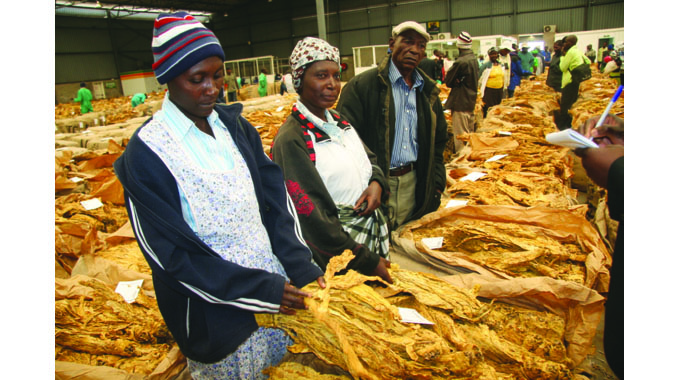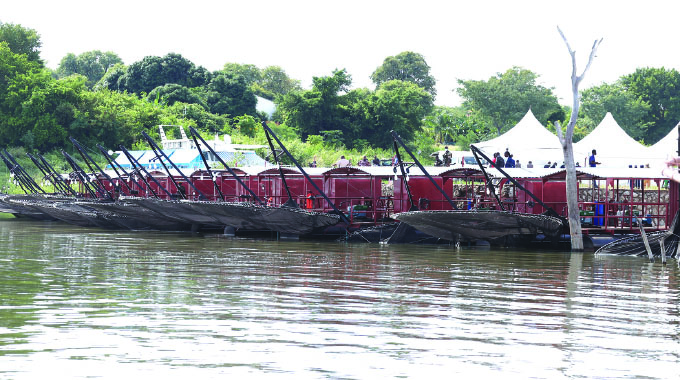Beautiful agriculture story that needs retelling

Ranga Mataire
Group Political Editor
Zimbabwe’s agriculture story needs constant retelling. I was reminded of the need to continue re-modelling the country’s national messaging strategies after encountering a random archive video address by Professor Patrick Loch Otieno Lumumba on the Zimbabwean situation, which got so much traction on social media recently.
Prof Lumumba is Kenyan and once served as director of the Kenyan Anti-Corruption Commission from September 2010 to August 2011.
Prof Lumumba’s video clip was posted by a Zimbabwean on Twitter in a manner that made it look like a current address dealing with the current situation in the country.
Attempts to highlight that the video was ancient and therefore inapplicable to the current situation fell on deaf ears. The pervading and disturbing narrative that gained traction was that the reform programme was a dismal failure.
What did Prof Lumumba say?
In his address, Prof Lumumba said Zimbabwe had lost its lustre after embarking on the land reform programme. He said the country was once known for its authentic nice cotton shirts and rolling productive farms, but it is now known only for the failure of its farmers.
Prof Lumumba’s sentiments may have been taken out of context as the situation in the country’s agriculture sector has drastically changed after the early teething challenges. This is a beautiful story that rarely gets global attention, but nevertheless needs to be told and re-told.
The beautiful agric story
A programme as fundamental as land reform was always going to have significant transitional challenges.
No sane person would have expected a smooth shift from a century of powerful white land ownership to new, ordinary black farmers.
Yet, the Zimbabwean Government continued to support newly resettled farmers by providing expertise (agric extension workers), farm inputs and mechanisation through various credit facilities. These programmes had their challenges, but the direction was clear.
Government’s support was needed to make the people aware of the need to treat the land not just as a tangible heritage but as a means of production and a business.
Fast forward to the New Dispensation and the birth of the Second Republic.
President Mnangagwa appointed strong leadership to spearhead agriculture.
First was the late Air Chief Marshal Perrance Shiri, whose firm leadership and organisational acumen led a massive rollout of extension services and irrigation investment as we had never seen.
Vangelis Haritatos, a successful young farmer, was a surprise choice for Deputy Minister in 2018, but the President’s choice was spot on. The Ministry set our agriculture on a new course.
Then came Dr Anxious Jongwe Masuka, a technocrat listed by the World Bank as one of Africa’s foremost agricultural experts. He was the executive director of the Zimbabwe Agriculture Society before his appointment.
Dr Masuka is ably complemented by Permanent Secretary, Dr John Basera, who excelled as SeedCo’s agronomy and extension services manager before joining Government.
The appointment of the two and other supporting staff paid dividends, judging by the positive changes in agriculture.
The successes
The challenges of Zimbabwean agriculture are known. But those who ignore the successes scored, against the odds, are deliberately ignorant. The farmers on the ground and the numbers say so.
Just last season, Zimbabwe recorded its highest wheat harvest since production of the cereal started in 1966, thanks to the Government’s Agriculture Recovery Plan aimed at boosting food security and nutrition in line with Vision 2030.
In 2022, the country recorded surplus after harvesting 375 000 tonnes of wheat against 360 000 tonnes required for national consumption annually.
This is a major achievement for Zimbabwe, which previously witnessed wheat production falling from 300 000 tonnes in 2 000 to below 20 000 tonnes in 2009.
The current surplus has been possible because the Government increased land under wheat from 60 000 hectares to 80 883 hectares.
The crop used to be the preserve of big commercial farmers. Now, smaller growers have joined in and are part of the record harvests.
Another contributor to the success of agriculture is the budget allocation to irrigation infrastructure.
The 2023 Budget shows over 50 irrigation schemes under the National Accelerated Irrigation Development Programme with the Smallholder Irrigation Revitalisation Programme, co-founded by the Government and IFAD putting to use 2 800 hectares out of a targeted 6 100ha.
In the 2023 Budget, $60,1 billion has been set aside for irrigation and the Treasury will use US$20 million from the IMF SDR allocation to fund 17 irrigation schemes covering a combined 2 714ha.
Improved output was also as a result of modern equipment, most of it sourced through the Belarus Farm Mechanisation Scheme that supplied combine harvesters to farmers.
Land reform critics always want to paint a picture of the private sector being a bystander in the agriculture sector.
Far from it, private investment funding accounted for 60 percent of the crop last year with Innscor through the PHI and Agrowth contracting 13 000 hectares of wheat production for its subsidiary National Foods.
In 2023, private contractors will account for 78 percent of wheat production.
This year, it is projected that Zimbabwe will harvest 2 298 281 tonnes.
This will be a 58 percent increase from the 2021-2022 season, which was affected by drought. The 2020-2021 maize harvest of 2 717 171 tonnes was the highest we have seen in years.
Agriculture’s resurgence is not just in maize, small grains or tobacco.
The country is gradually claiming its position in the global horticulture industry.
Before the land reform, the industry was dominated by white commercial farmers, but now it has a mix of indigenous farmers and some foreign investors.
The horticulture sector is emerging as a major force for the development of the agriculture sector.
In a short period after the launch of the Presidential Horticulture Recovery Programme, the Government is looking at generating US$143 million from export products this coming year.
Data from ZimStat for January-December 2022 show that US$86.6 million was realised from horticulture exports, making a 12 percent rise from last year’s US$72,9 million.
This year, for the first time ever, Zimbabwean farmers will export citrus to China, under an agreement reached between the two countries.
Three citrus estates in Beitbridge, Mazowe and Chegutu have qualified to export to China, according to the Horticulture Development Council, the association of citrus farmers. This shows the recovery in this sector.
This is the beautiful story that needs retelling. Our farm story is not as black and white as some would want to tell us. Even a study by Britain’s own Institute of Development Studies at Sussex University has said land reform was and is not a failure.
Our messaging on agriculture must be relentless and factual.
Perhaps, Prof Lumumba, and all those who shared his old video, need an update. They need to speak to the diverse groups of young people who now are the driving force behind Zimbabwe’s agriculture renaissance.
Those are the people who know the facts, more than the perpetually negative internet trolls.
For feedback [email protected]; [email protected]







Comments